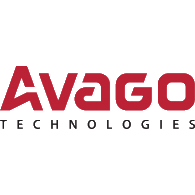Nachrichten |
| Datum / Uhrzeit |
Titel |
Bewertung |
| 29.10.25 02:33:57 |
Dow Jones Vorgriffe: Trump optimistisch über China; Warum die Zahlen von Microsoft, Google und Meta so wichtig sind. |
 |
|
**Haftungsausschluss: Der Text wurde mit Hilfe einer KI zusammengefasst und übersetzt. Für Aussagen aus dem Originaltext wird keine Haftung übernommen!**
Okay, here's a condensed summary of the text and its German translation:
**Summary (English):**
Stock market futures are heavily influenced by upcoming earnings reports from major tech companies (Microsoft, Google, and Meta) and anticipation of a potential new interest rate cut by the Federal Reserve. Additionally, President Trump has expressed a positive outlook regarding China.
**Translation to German:**
**Dow Jones Futures:** Microsoft, Google und Meta-Ergebnisse stehen bevor, zusammen mit einer möglichen neuen Zinssenkung der Fed. Präsident Trump ist optimistisch über China.
---
**Notes on the translation:**
* "Dow Jones futures" translates to "Dow Jones Futures."
* "Loom" (imminent) is best captured with "stehen bevor" (are imminent).
* "Upbeat" is translated as "optimistisch."
Would you like me to:
* Adjust the tone of the German translation?
* Provide a longer, more detailed translation? |
| 28.10.25 23:30:59 |
Dow Jones und S&P 500 steigen auf Höchststände – Microsoft, Google, Meta und die US-Notenbank sind dran. |
 |
|
**Haftungsausschluss: Der Text wurde mit Hilfe einer KI zusammengefasst und übersetzt. Für Aussagen aus dem Originaltext wird keine Haftung übernommen!**
**Zusammenfassung:**
Die Aktienmärkte steigen weiterhin auf Rekordhöhen, vor allem aufgrund des rasanten Anstiegs des Nvidia-Werts, der kurz vor einer Bewertung von 5 Billionen Dollar liegt. Microsoft, Google, Meta und die Federal Reserve werden genau beobachtet, da sie potenzielle Einflussfaktoren auf die Marktentwicklung sind.
---
Would you like me to:
* Expand on any part of the summary?
* Provide a slightly different translation (perhaps with a more formal tone)? |
| 28.10.25 22:21:00 |
Erwartungen an neue Rekorde vor der Fed-Entscheidung und Mag7-Ergebnissen? |
 |
|
**Haftungsausschluss: Der Text wurde mit Hilfe einer KI zusammengefasst und übersetzt. Für Aussagen aus dem Originaltext wird keine Haftung übernommen!**
**Zusammenfassung (ca. 500 Wörter)**
Dienstag, den 28. Oktober 2025, erlebten die wichtigsten US-Aktienindizes – den Dow Jones (+0,34%), den S&P 500 (+0,23%) und den Nasdaq (+0,80%) – weiterhin Rekordhohen, auch wenn sie sich innerhalb des Tages etwas abschwächten. Der Russell 2000, der die Small-Cap-Unternehmen repräsentiert, lag mit -0,55% zurück.
Die Performance des Marktes wurde durch bevorstehende Gewinnberichte mehrerer bedeutender Unternehmen getrieben, darunter die Technologiegiganten Microsoft, Meta, Apple und Amazon, sowie NVIDIA (mit einer Marktkapitalisierung von 4,89 TRILLION USD!), Alphabet, Broadcom, Tesla und Berkshire Hathaway. Diese Unternehmen operieren mit Billionen-Dollar-Bewertungen und sind wichtige Treiber des Investorenhypes.
Amazon gab eine erhebliche Reduzierung der Belegschaft von 14.000 Mitarbeitern bekannt, Teil einer umfassenderen Strategie, stark in künstliche Intelligenz zu investieren und mit Wettbewerbern wie Oracle und Microsoft zu konkurrieren.
Wichtige Marktnachrichten waren die Erwartung eines Quartalszinssenkung durch den Federal Open Market Committee (FOMC) und die Veröffentlichung der Gewinnberichte für das dritte Quartal. Mehrere Unternehmen meldeten Gewinnzahlen, die Erwartungen übertroffen hatten, darunter Visa (Umsatz um 12%, verarbeitete Transaktionen +9%), Booking.com (starkes Umsatzwachstum und hohe Nachfrage) und Mondelez (Umsatz im Einklang mit den Erwartungen).
Einige Unternehmen hingegen unterperformten. Die Aktien von Mondelez International fielen scharf (-4,5%) nach einer schmalen Gewinnübertragung. Darüber hinaus bewegten sich Aktien von Chipotle und Starbucks aufgrund ihrer jeweiligen Gewinnberichte negativ.
Der Markt ist derzeit bestens darauf vorbereitet, die Erwartung einer weiteren Zinssenkung durch die Fed im Dezember zu berücksichtigen, die potenziell den Leitzins auf sein niedrigstes Niveau seit drei Jahren senkt. Am morgigen Markt werden eine massive Flut von Q3-Gewinnzahlen von wichtigen Unternehmen wie Alphabet, Meta, Microsoft, Boeing, Chipotle und Starbucks die Handelsaktivitäten dominieren.
Der Bericht hebt die erhebliche Bedeutung makroökonomischer Faktoren, insbesondere der Erwartungen an die Zinssätze, und die Wichtigkeit von Unternehmensgewinnberichten für die Gestaltung der Marktstimmung hervor. Der Fokus des Marktes verschiebt sich auf eine datengesteuerte Bewertung, während Unternehmen weiterhin in KI investieren und um Marktanteile kämpfen.
|
| 28.10.25 21:34:26 |
Dow und S&P 500 steigen auf Höchststände, Nvidia schaut auf 5 Billionen Dollar – Microsoft, Google, Meta und die Fed |
 |
|
**Haftungsausschluss: Der Text wurde mit Hilfe einer KI zusammengefasst und übersetzt. Für Aussagen aus dem Originaltext wird keine Haftung übernommen!**
**Zusammenfassung:**
Die Aktienmärkte steigen weiterhin, vor allem aufgrund des rasanten Anstiegs von Nvidia, der ein Wert von rund 5 Billionen Dollar nahelegt. Auch Microsoft, Google und Meta sowie die US-Notenbank Fed sind wichtige Einflussfaktoren.
---
**Notes on the translation:**
* I've aimed for a natural and accurate translation that captures the meaning of the original text.
* “Around” (um die 5 Billionen) is added to capture the imprecise nature of the $5 trillion figure.
Would you like me to:
* Provide alternative phrasing for specific parts?
* Tailor the translation to a specific context (e.g., a news article)? |
| 28.10.25 20:39:00 |
Die Nvidia-Aktie erreicht ein Rekordhoch, knapp unter 5 Billionen Dollar, während die GTC ihren Höhepunkt findet. |
 |
|
**Haftungsausschluss: Der Text wurde mit Hilfe einer KI zusammengefasst und übersetzt. Für Aussagen aus dem Originaltext wird keine Haftung übernommen!**
**Kurzfassung:**
Die Aktien von NVIDIA stiegen aufgrund der Aufregung, die durch die Keynote-Präsentation des CEO Jensen Huang auf der GTC-Veranstaltung des Unternehmens ausgelöst wurde.
**Alternatively, a slightly more polished translation:**
**Die Aktien von NVIDIA erfreuten sich nach der Keynote-Präsentation des CEO Jensen Huang auf der GTC-Messe des Unternehmens einem Aufwärtsschub.**
---
Would you like me to provide a different version or focus on a specific aspect of the translation? |
| 28.10.25 19:46:08 |
Nvidias Chef weist Bedenken wegen einer KI-Blase zurück und sichert sich Partner. |
 |
|
**Haftungsausschluss: Der Text wurde mit Hilfe einer KI zusammengefasst und übersetzt. Für Aussagen aus dem Originaltext wird keine Haftung übernommen!**
Here’s a summary of the text, followed by the German translation:
**Summary (approx. 600 words)**
Nvidia CEO Jensen Huang delivered a bullish presentation at Nvidia’s GTC conference in Washington, D.C., emphasizing the company’s position at the forefront of the artificial intelligence revolution. The event highlighted significant advancements in Nvidia’s Blackwell and Rubin chips, projecting revenue of half a trillion dollars by 2026 and signaling a major turning point in the AI industry.
Key announcements included a $1 billion investment in Nokia Oyj, supporting the Finnish company’s strategic shift from mobile networking to AI, and a partnership to power 100,000 self-driving Uber vehicles. Nvidia also forged collaborations with Palantir Technologies and CrowdStrike, aiming to integrate its technology into cybersecurity and logistics solutions. Furthermore, the company unveiled plans to develop an autonomous vehicle platform with Lucid Group and a supercomputer for Eli Lilly & Co., leveraging over 1,000 Blackwell AI accelerator chips.
Huang’s presentation was strategically aligned with President Trump’s economic agenda, particularly focusing on bolstering American manufacturing and easing restrictions on exporting Nvidia’s chips to China. He acknowledged that his revenue projections didn’t include sales to China, reflecting the ongoing trade tensions and export controls. Huang also directly referenced Trump’s “Make America Great Again” slogan, adding a patriotic element to the event.
Despite concerns about an “AI bubble,” Huang adamantly defended the long-term economic benefits of AI investment, arguing that the computing infrastructure build-out is a justified and necessary step. He highlighted the rapid adoption of AI models, demonstrating customers’ willingness to pay for the technology.
Nvidia’s aggressive strategy aims to broaden its client base beyond its current reliance on major data center operators like Microsoft, Amazon, and Google. The company is facing increased competition from Advanced Micro Devices (AMD) and Broadcom, as well as from OpenAI, which is exploring in-house AI development. Qualcomm’s recent announcement of entering the AI accelerator market further intensifies the competitive landscape.
The event underscored Nvidia’s dominant position in the AI accelerator market, yet the company recognized the need to adapt to evolving market dynamics. Huang’s confidence in Nvidia’s ability to drive innovation and generate significant returns fueled a substantial increase in Nvidia’s stock price. The GTC conference served not only as a showcase for Nvidia’s technological advancements but also as a strategic move to solidify the company’s leadership in the transformative world of artificial intelligence.
**German Translation (approx. 600 words)**
**Zusammenfassung (ca. 600 Wörter)**
Nvidias CEO Jensen Huang hielt auf der Nvidias GTC-Konferenz in Washington, D.C., eine optimistische Präsentation, die das Unternehmen als Vorreiter der künstlichen Intelligenzrevolution hervorhebt. Die Veranstaltung betonte die Fortschritte der Blackwell- und Rubin-Chips von Nvidia und prognostizierte einen Umsatz von 500 Milliarden Dollar bis 2026, was einen bedeutenden Wendepunkt in der KI-Branche signalisiert.
Zu den wichtigsten Ankündigungen gehörte eine Investition von 1 Milliarde Dollar in Nokia Oyj, die den finnischen Konzern bei seinem strategischen Übergang von Mobilfunknetzen zu KI unterstützt, sowie eine Partnerschaft zur Versorgung von 100.000 selbstfahrenden Uber-Fahrzeugen. Nvidia schloss außerdem Kooperationen mit Palantir Technologies und CrowdStrike, um seine Technologie in Cybersecurity- und Logistiklösungen zu integrieren. Darüber hinaus wurden Pläne zur Entwicklung einer autonomen Fahrzeugplattform mit Lucid Group und einem Supercomputer für Eli Lilly & Co. vorgestellt, wobei über 1.000 Blackwell KI-Beschleuniger-Chips eingesetzt werden sollten.
Huangs Präsentation war strategisch auf die Wirtschaftspolitik von Präsident Trump ausgerichtet, insbesondere mit dem Ziel, die amerikanische Fertigung zu stärken und Beschränkungen für den Export von Nvidias Chips nach China aufzuheben. Er räumte ein, dass seine Umsatzprognosen keine Verkäufe nach China einschließen würden, was die Handelsspannungen und Exportkontrollen widerspiegelt. Huang zitierte auch Trump’s Slogan „Make America Great Again“, was der Veranstaltung einen patriotischen Unterton verlieh.
Trotz Bedenken hinsichtlich einer „KI-Blase“ verteidigte Huang entschieden die langfristigen wirtschaftlichen Vorteile von KI-Investitionen, argumentierend, dass der Aufbau der Recheninfrastruktur ein gerechtfertigter und notwendiger Schritt sei. Er betonte die rasche Akzeptanz von KI-Modellen und zeigte, dass Kunden bereit sind, für die Technologie zu bezahlen.
Nvidias aggressives Strategie zielt darauf ab, seine Kundenbasis über seine derzeitige Abhängigkeit von großen Datenzentrumsbetreibern wie Microsoft, Amazon und Googles zu erweitern. Das Unternehmen steht in verstärktem Wettbewerb mit Advanced Micro Devices (AMD) und Broadcom, sowie mit OpenAI, das die Entwicklung eigener KI-Technologien erkundet. Qualcoms jüngste Ankündigung, in den Markt für KI-Beschleuniger einzutreten, verschärft die Wettbewerbsdynamik weiter.
Die Veranstaltung unterstrich Nvidias dominierende Position auf dem Markt für KI-Beschleuniger, doch das Unternehmen erkannte die Notwendigkeit zur Anpassung an die sich entwickelnden Marktbedingungen. Huangs Vertrauen in die Fähigkeit von Nvidia, Innovationen voranzutreiben und erhebliche Renditen zu erzielen, führte zu einem deutlichen Anstieg des Aktienkurses von Nvidia. Die GTC-Konferenz diente nicht nur als Präsentation für Nvidias technologische Fortschritte, sondern auch als strategischer Schritt zur Festigung der Position des Unternehmens als führend in der transformativen Welt der künstlichen Intelligenz.
---
Would you like me to adjust the length or focus of the translation, or perhaps provide a different translation style? |
| 28.10.25 19:12:38 |
Der Dow Jones mit IBM und Broadcom – die Aktien brechen wichtige Kaufziele. |
 |
|
**Haftungsausschluss: Der Text wurde mit Hilfe einer KI zusammengefasst und übersetzt. Für Aussagen aus dem Originaltext wird keine Haftung übernommen!**
**Zusammenfassung:**
Mit dem Rekordhoch des Aktienmarktes übertreffen IBM und der KI-Riesen Broadcom neu definierte Kaufziele, was auf einen möglichen Aufwärtstrend hindeutet.
---
Would you like me to:
* Provide a different level of detail in the summary?
* Offer alternative phrasing for the translation?
* Translate the text into another language? |
| 28.10.25 16:38:00 |
AVGO oder CSCO: Welches KI-Infrastruktur-Aktienpapier lohnt sich gerade? |
 |
|
**Haftungsausschluss: Der Text wurde mit Hilfe einer KI zusammengefasst und übersetzt. Für Aussagen aus dem Originaltext wird keine Haftung übernommen!**
**Zusammenfassung:**
Broadcom (AVGO) und Cisco Systems (CSCO) sind aufgrund der massiven, und stetig wachsenden, globalen Investitionen in Künstliche Intelligenz (KI) hervorragend positioniert. Angetrieben durch gigantische KI-Ausgabenprognosen – Gartner prognostiziert 1,48 Billionen US-Dollar im Jahr 2025 und 2,02 Billionen US-Dollar im Jahr 2026 – stehen diese Unternehmen an vorderster Front, um die kritische Infrastruktur zu liefern, die für diese Transformation benötigt wird.
Beide Unternehmen konzentrieren sich auf drei Schlüsselbereiche: KI-Infrastrakturlösungen, Datenzentrum-Ausbauten und Cybersicherheit. Sie integrieren ihre Angebote erfolgreich in Plattformen, die von Hyperskalern (Google Cloud, Microsoft Azure, AWS) und Enterprise-Cloud-Anbietern genutzt werden. Entscheidend ist, dass sie Next-Generation-KI-Ethernet-Fabriken für Skalierbarkeit und Offenheit innerhalb von Rechenzentren einsetzen.
**Broadcoms Stärke: Anwendungsspezifische integrierte Schaltungen (ASICs)**
Broadcoms Strategie konzentriert sich auf XPUs – Anwendungsspezifische integrierte Schaltungen (ASICs) – die für das Training von Generative-KI-Modellen unerlässlich sind. Deutliche Bestellungen dieser ASICs von Giganten wie Alphabet (Google) und Meta Platforms treiben erhebliche Umsätze. Broadcoms ehrgeizige Vereinbarung zur Entwicklung von 10 Gigawatt an kundenspezifischen KI-Beschleunigern mit OpenAI unterstreicht sein Engagement. Sie setzen auf Tomahawk 5 und 6 Produkte sowie den Jericho 4 Ethernet Fabric Router, sowie einen erheblichen Fokus auf Sicherheitslösungen.
**Ciscos vielschichtiger Ansatz**
Cisco verfolgt einen breiteren Ansatz und investiert stark in KI-Infrastruktur, erweitert sein KI-Portfolio innerhalb von Rechenzentren und arbeitet mit NVIDIA zusammen. Ihre Zusammenarbeit mit NVIDIA ist besonders wichtig, wobei NVIDIA’s Spectrum-X Architektur genutzt wird, um geringe Latenzzeiten und hohe Geschwindigkeiten für KI-Cluster zu liefern, was Unternehmens-KI-Bestellungen ankurbelt. Cisco erweitert außerdem seine Sicherheitsangebote, einschließlich Cisco Secure Access, Hypershield und XDR, und sichert KI-bereite Rechenzentren mit der Cisco Secure AI Factory.
**Positive Prognose und strategische Partnerschaften**
Beide Unternehmen erleben positive Revisionen der Gewinnprognosen. Cisco hat eine leicht bessere Historie bei der Übertreffung der Konsensschätzungen. Der Markt erkennt das enorme Wachstumspotenzial, das durch den KI-Boom angetrieben wird, an. Strategische Partnerschaften – insbesondere mit NVIDIA – sind wichtige Katalysatoren für ihren weiteren Erfolg. Beide setzen auf 400G bidirektionale Optik.
**Bewertungsüberlegungen**
Obwohl beide Unternehmen derzeit als überbewertet gelten, handelt Cisco derzeit mit einem deutlich niedrigeren Forward Price-to-Sales-Verhältnis (4,69X) im Vergleich zu Broadcom (20,18X), was eine potenziell attraktivere Investitionsmöglichkeit zu diesem Zeitpunkt nahelegt.
---
Would you like me to translate any specific part of this text, or perhaps generate a different version? |
| 28.10.25 15:26:20 |
Apple-Aktie ist reif für den Kauf, besonders mit dieser Fonds-Erweiterung um 8 Millionen Aktien. Und Broadcom ist auch |
 |
|
**Haftungsausschluss: Der Text wurde mit Hilfe einer KI zusammengefasst und übersetzt. Für Aussagen aus dem Originaltext wird keine Haftung übernommen!**
Der Apple-Aktienkurs befindet sich in einem Kaufbereich im Hinblick auf die bevorstehenden Geschäftsergebnisse. Gleichzeitig erhöhen Investmentfonds ihre Beteiligung an Broadcom.
---
**Notes on the translation:**
* “Buy zone” is translated as “Kaufbereich” (buying area).
* “Mutual funds” is translated as “Investmentfonds”.
* I've aimed for a clear and straightforward translation suitable for a financial context.
Would you like me to adjust the translation or create a different version (e.g., more formal)? |
| 28.10.25 14:42:27 |
Halbwegs gemischte Lage bei den Halbleiterwerten wegen aller dieser Nachrichten und Zahlenmeldungen. |
 |
|
**Haftungsausschluss: Der Text wurde mit Hilfe einer KI zusammengefasst und übersetzt. Für Aussagen aus dem Originaltext wird keine Haftung übernommen!**
**Zusammenfassung (ca. 600 Wörter)**
Die Aktienkurse im Halbleitersektor waren am Dienstag gemischt, getrieben von einer Kombination aus Unternehmensnachrichten, Gewinnzahlen und geopolitischen Entwicklungen. Während einige Unternehmen einen positiven Kurs nach oben fanden, erlebten andere deutliche Einbucht.
**Positive Entwicklungen:**
* **Nvidia (NVDA):** Die Aktien stiegen um 1 %, nachdem Berichte von Präsident Trumps geplanter Zusammenkunft mit CEO Jensen Huang sowie gemeinsamen Abendessen mit den CEOs von Apple und Salesforce in Japan veröffentlicht wurden. Dies stützte das Vertrauen und hielt Potenzial für Handelsvorteile bei bay.
* **Intel (INTC):** Um 2,5 % gestiegen, getrieben durch die Zusammenarbeit von Supermicro mit Micron und Lip Bu-Tans Firma bei der Erzielung eines STAC-M3-Benchmarks, was auf verbesserte Leistungen in der Technologie für Zeitreihendatenbanken hinweist, die für algorithmisches Trading und Backtesting-Workloads unerlässlich sind.
* **AMD (AMD):** Setzte seine jüngsten Gewinne fort und stieg um 1,2 %, was auf anhaltende Investorenpraxis hindeutet.
* **NXP Semiconductors (NXPI):** Obwohl die Ergebnisse die Erwartungen der Analysten übertrafen, sank der Aktienkurs um 3,5 % im Zusammenhang mit den Bewegungen der Wettbewerber.
**Negative Entwicklungen:**
* **Amkor Technology (AMKR):** Erlebte einen deutlichen Rückgang von 8,5 % aufgrund der linearen Ergebnisse des dritten Quartals und der Ankündigung des Ausscheidens von CEO Giel Rutten.
* **Commvault Systems (CVLT):** Erlitt einen dramatischen Rückgang von 14 % nach enttäuschenden Ergebnissen und Führung, was Bedenken hinsichtlich der Leistung des Unternehmens aufzeigt.
* **ASML (ASML):** Fiel leicht aufgrund eines Berichts von Bloomberg über ein Thiel-backed Startup, Substrate, das versucht, die Dominanz von ASML im Lithographie-Equipment herauszufordern. Dies stellt eine potenziell langfristige Herausforderung dar.
* **Qualcomm (QCOM):** Zunahm um 2,8 %, nachdem sie ihren Eintritt in den Markt für KI-Beschleuniger angekündigt hatten, was von Investoren offenbar mit Vorsicht aufgenommen wurde.
* **Texas Instruments (TXN) & Analog Devices (ADI):** Beide bewegten sich im Zusammenhang mit den Ergebnissen von NXP nach unten, was auf eine allgemeine Schwäche am Markt hindeutet.
**Grundlegende Trends und Bedenken:**
Mehrere Faktoren beeinflussen den Halbleitersektor:
* **Geopolitik:** Präsident Trumps Treffen mit wichtigen Führungskräften unterstreicht die anhaltende Bedeutung von Handelsbeziehungen und potenziellen Politikänderungen.
* **KI-Nachfrage:** Die rasante Ausweitung der künstlichen Intelligenz treibt die Nachfrage nach fortschrittlichen Chips und Datenzentren an, wodurch sowohl Chancen als auch Wettbewerbsdruck entstehen. Der Aufstieg von Startups wie Substrate zwingt etablierte Unternehmen, zu reagieren.
* **Lieferkettenprobleme:** Der Bericht von Chey Tae-won über KI-Datenzentren, der Engpässe hervorhebt, deutet auf anhaltende Probleme innerhalb der Lieferkette der Branche hin.
Ich hoffe das hilft!
|












